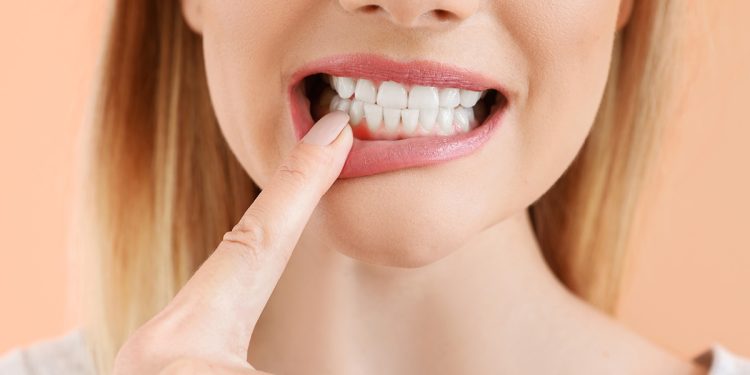Periodontal disease is a serious gum infection that can damage the soft tissue and bone that supports your teeth. Symptoms of this disease include bad breath, irritated or swollen gums, bleeding, receding gums, painful chewing, and loose or sensitive teeth.
The health of our teeth is essential to our overall well-being for many reasons. When periodontal disease occurs, you run the risk of having the infection spread, losing your teeth or ability to chew, and damaging your self-confidence. Naturally, it is best to prevent this disease and support the health of your mouth, teeth, and gums before it is too late. So, keep reading to find out how.
1) Brush Your Teeth
We know that brushing our teeth is important but many are unaware of the proper way to brush. According to the consensus of dentists, here is what you should be doing to brush your teeth correctly:
- Brush twice per day, in the morning and evening
- Brush for at least two minutes
- Use mouthwash and fluoride toothpaste
- Choose a toothbrush with nylon bristles that can reach each tooth
- Replace your toothbrush every three month
- Brush at a 45-degree angle in a circular motion
- Gently brush your tongue and the insides of your cheeks
If you fail to brush as directed, bacteria can settle on your teeth or gum line, increasing your risk of cavities, periodontal disease, and other conditions.
2) Floss Your Teeth
Believe it or not, flossing your teeth is just as important as brushing. Many dentists insist that the primary cause of cavity formation is the failure to floss.
When you skip flossing, you leave food particles, plaque, and bacteria between your teeth. Over time, these harmful particles will deteriorate your teeth and even damage your gums.
For flossing to be effective, you must perform the action correctly, and here is how.
- Break off enough floss to hold tightly with both hands, leaving only 1 to 2 inches of floss for your teeth.
- Place the floss between two teeth and glide it up and down.
- While flossing, slide the string against the sides of each tooth.
- When the floss reaches your gums, curve the floss into a U shape and enter the space between your gums and tooth.
- Be careful not to cut your gums, or they might bleed and bruise.
- Use a clean piece of floss for each set of teeth.
If you have braces, dentures, partials, or implants, consult your dentist about the proper way to floss for your unique situation.
3) Understand Risk Factors
Failing to brush and floss correctly are not the only things that play a part in developing periodontal disease.
In fact, many elements of everyday life put you at risk. Here are a few things that contribute to periodontal disease:
- Smoking
- Hormonal changes
- Genetics
- Inadequate nutrition
- Drug and alcohol abuse
- Certain medications
- Diseases that alter your immune system
- Conditions such as Crohn's disease, diabetes, and rheumatoid Arthritis
Some of these risks can be hard to identify. However, you can help support your dental health by visiting your dentist regularly.
Additionally, if you use tobacco orally, you may want to consider using a nicotine patch or quitting. If you smoke marijuana, consider other options like topicals or edibles.
4) Visit Your Dentist Twice Per Year
No matter how diligent you are with cleaning your mouth and teeth daily, periodontal disease can still rear its ugly head because of the risk factors mentioned above.
Additionally, there are some elements of teeth cleaning that simply can not be completed at home. Therefore, it is essential to visit your dentist twice per year.
At each appointment, your dentist will clean your teeth professionally and perform an oral exam. During the oral exam, the dentist will look for signs of disease, cavities, or deterioration.
If an issue is found during your visit, the dental team will work with you to create a plan of action.
5) Holistic Prevention
You may be surprised to hear that there are many natural ways to aid the prevention of periodontal disease.
For example, here are a few things to incorporate into your daily routine to keep your mouth and teeth healthy.
- Green tea- Green tea has many antibacterial properties that help cleanse oral cavities.
- Physical activity-When you are physically active, you boost your blood circulation to your entire body, including your teeth.
- Baking soda- Baking soda can help maintain oral health because it restores the acid balance in your mouth. You can use it by sprinkling a bit of the powder on your toothbrush before brushing.
If you choose to use holistic forms of prevention, remember that they don’t replace the need to brush, floss, and visit a dentist. Green tea, physical activity, and baking soda only provide additional support to oral health.
























